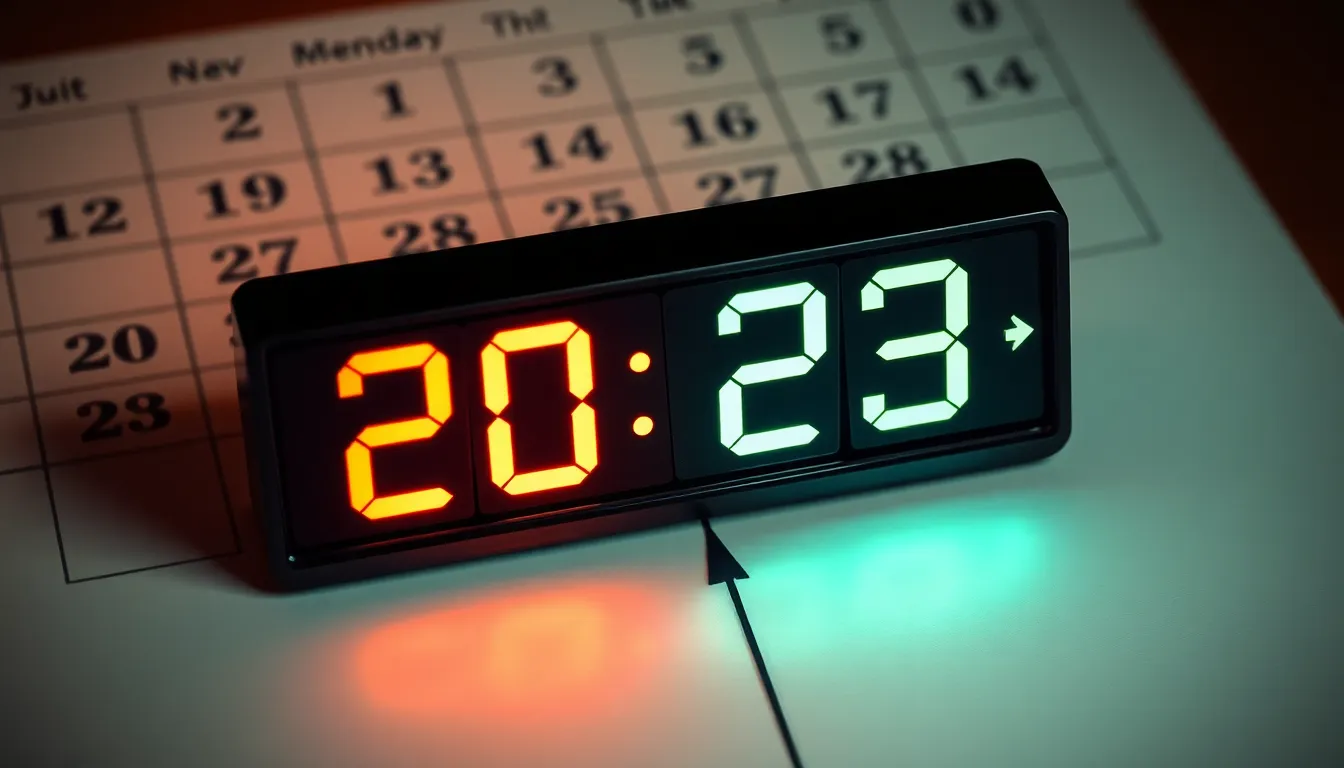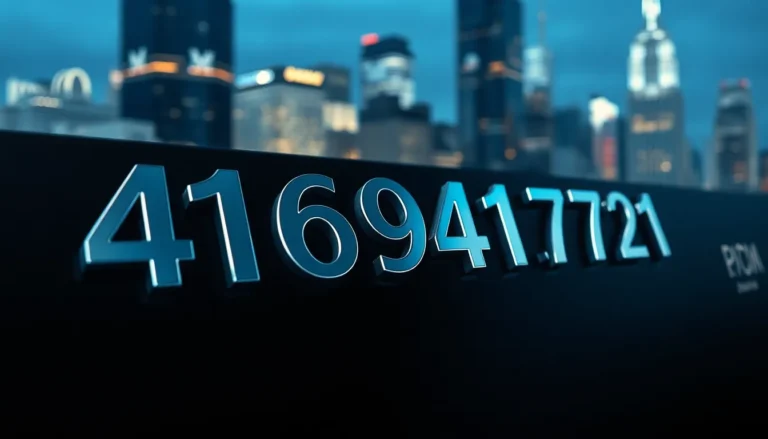Table of Contents
ToggleTime flies faster than a cat chasing a laser pointer, doesn’t it? One moment you’re celebrating the New Year, and the next, you’re wondering what year was eight years ago. If you’ve ever found yourself caught in a time warp, you’re not alone. Many people struggle with simple math when it comes to years, especially when life gets in the way.
Understanding Time Calculations
Time calculations play a vital role in understanding our timeline. They enable accurate assessments of past and future events.
The Importance of Calendar Years
Calendar years serve as a reference point for measuring time. They provide a structured way to track events, age, and anniversaries. Individuals use calendar years to make important life decisions, like planning birthdays or significant celebrations. The Gregorian calendar, widely used today, consists of 12 months, making it easier to calculate durations in a uniform manner. Each year contains 365 days, except leap years, which add an extra day in February. Understanding these elements fosters clarity in resolving time-related queries.
Common Time-Related Questions
Many common questions arise regarding time calculations. Queries often include, “What year is it if it’s 8 years ago?” or “How do I calculate my age?” Such questions often reflect a broader need for time awareness. The ease of performing these calculations can affect daily life and significant moments. People frequently ask about future dates too, planning for events well in advance. Understanding how calendar years work simplifies these inquiries, offering a clearer perspective on timelines. Answering these questions accurately helps individuals manage their time more effectively.
Calculating the Year

Calculating past years requires a straightforward approach. Identifying the current year provides a basis for these calculations.
Current Year Reference
The current year stands at 2023. Knowing this number allows for easy calculations regarding past years. By subtracting eight from 2023, a relevant year emerges. This calculation reveals that the year eight years ago was 2015. Thus, understanding the present year simplifies the process of determining past dates.
Steps to Determine the Year
Start by recognizing the current year, which is 2023. Next, subtract eight from this number to find the target year. Performing the calculation yields 2023 minus 8, equaling 2015. Conclusively, this method reliably identifies past years without complication. Following these steps ensures clarity when addressing any time-related queries.
Historical Context
Understanding the year 2015 offers insight into notable global events, cultural changes, and technological advancements.
Notable Events from 8 Years Ago
In 2015, significant occurrences shaped politics and society worldwide. The Paris Climate Agreement was established, bringing together countries to combat climate change, targeting an ambitious global temperature limit. The United States Supreme Court ruled on same-sex marriage, legalizing it nationwide. Other notable events included the emergence of the refugee crisis, particularly in Europe, as conflicts in Syria and other regions drove mass migrations. These events marked 2015 as a pivotal year in contemporary history.
Changes in Culture and Technology
Cultural shifts in 2015 reflected evolving societal norms and preferences. Social media platforms gained traction, with platforms like Instagram and Snapchat dominating interaction among younger audiences. Streaming services surged in popularity, prompting a shift in how audiences consumed entertainment. Technology also flourished; smartphones continued evolving rapidly, introducing advanced features for user convenience. Innovations in artificial intelligence began changing industries, forecasting significant transformations in the coming years.
Personal Reflections
Time perception shapes how individuals recall experiences. Memories often blur as years pass, creating a sense of time slipping away. People frequently liken the rapid passage of time to fleeting moments. For many, significant life events from eight years ago may seem distant yet vivid. Events like graduations, marriages, or career moves become markers in their personal timelines. Such instances often trigger nostalgia, prompting reflection on growth and transitions.
How Time Perception Influences Memory
Time perception significantly impacts how memories are formed. Experiences that felt momentous can fade into mere fragments over time. Memory consolidation occurs as one reflects on pivotal events. Consequently, the past year often feels less pronounced than immediate experiences. Researchers note that emotional resonance amplifies memory recall, influencing how people connect with specific years. As individuals navigate life, their emotional landscapes shape these memories, reinforcing connections to past events.
Personal Milestones from 8 Years Ago
Examining milestones from eight years ago reveals various personal transformations. In 2015, many individuals celebrated graduations or new job opportunities. Significant relationships often evolved, with people finding partners or welcoming children into their families. Others embarked on life-changing travels that broadened their perspectives. These milestones collectively embody growth, serving as markers of resilience and adaptation. Reflecting on such moments offers clarity on journeys taken and future paths to explore.
Reflecting on the past can provide valuable insights into personal growth and societal changes. Eight years ago in 2015 marked a significant turning point in various aspects of life. From landmark legal decisions to technological advancements the events of that year continue to shape today’s world.
Understanding how to calculate past years not only aids in recalling memories but also enhances time management skills. Recognizing the impact of time on individual experiences can help people appreciate their journeys and the milestones that define them. Embracing the lessons from the past ultimately empowers individuals to move forward with clarity and purpose.





